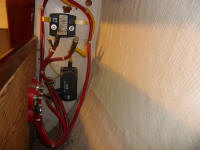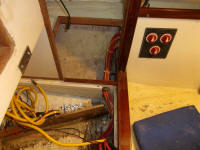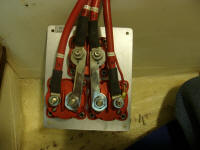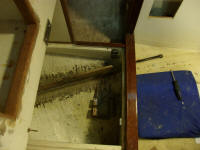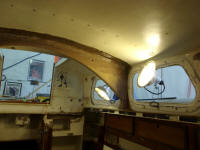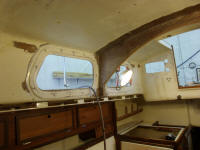
110 Cookson Lane | Whitefield, ME 04353 | 207-232-7600 | tim@lackeysailing.com
Blue Teal | Saturday/Sunday, June 8-9, 2013
Saturday was a mostly administrative day, beginning with some project planning during a on-site meeting with the owner, during which we determined the most realistic direction for the project. The project's focus would be on installing the new engine and some electrical installations and related work. In addition, the owner wanted to square away the interior once and for all; now that he'd gotten various components to a certain point, it was time for final finishes, including a cork overhead in most spaces to limit condensation and achieve the desired appearance. I also spent time preparing orders for the work ahead as needed.
Sunday morning, I worked in the cabin to remove a few installations, including a mass of battery cables that I'd installed a number of years ago at a different phase of the project. With the batteries being moved, and a reconfiguration of the system, these cables would be changed later to suit the new situation, and for now were just in the way. I also removed a few minor bits of hardware, including the interior handrails overhead, to get ready for the surface preparation steps ahead.
Afterwards, I began in the engine room. Although at first we'd hoped to reuse the existing engine foundations, which had been installed at the same time as the old Universal diesel, after consideration I decided it would be best to replace them, since the existing foundations were not as compatible with the new engine as we'd hoped, and by the time modifications were made it'd be far easier and better to just start from scratch. First, I removed the bilge pump float switch, moving it temporarily to get it out of the way during the work ahead. Then, with saw and grinder, I removed the old fiberglass foundations and ground the surfaces as needed to prepare for the new ones. I also sanded my way into the bilge to the extent possible to prepare for repairing the damaged cap at the bottom; there'd be more work ahead here.
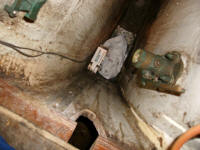
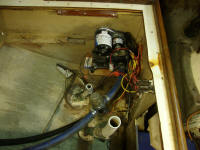
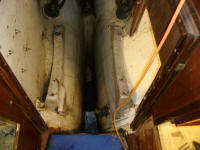
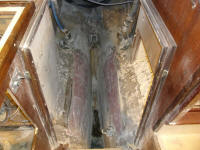

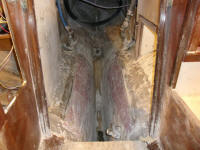
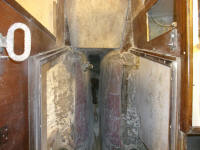
Some of the after bulkhead surfaces in the cabin would later be painted, so to prepare these areas I sanded the existing paint as needed, removing most of the top layers of off-white paint as they didn't seem a good substrate for the new finish.
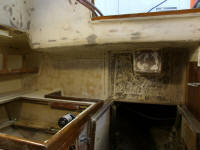
The main cabin overhead and sides would, under the current plan, later receive cork tiles as their final finish. To prepare the existing surfaces for the adhesive that would secure the tiles, I used coarse abrasive to sand the paint as needed; I planned for a thorough scuffing, but found that the off-white paint needed to mostly come off in order to expose sound material. The plywood arch in the center of the cabin, built a few years ago by the owner as a reinforcement, would later be painted.
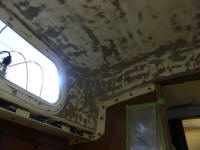
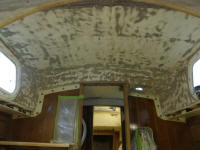
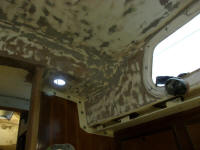
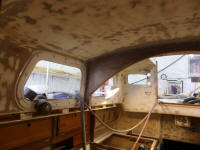
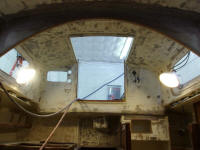
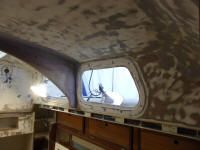
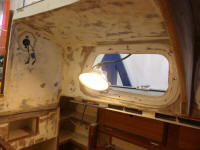
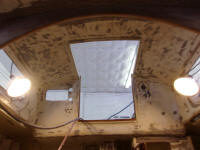
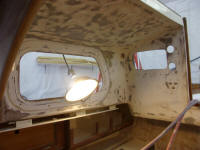
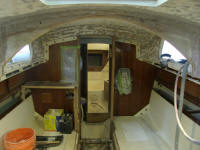
In the starboard settee locker, I removed the inside portion of an old abandoned plastic knotmeter through-hull, eventually grinding the area about the opening flush and clean for later patching. At this juncture, I had not yet removed the external mushroom head nor the remains of the through hull (still visible in the hole), which I'd do just a bit later.
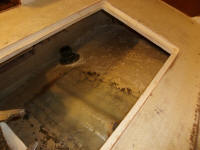
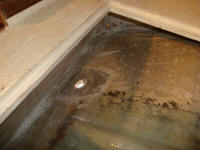
Total Time on This Job Today: 9.25 hours (3 hours Saturday,
6.25 hours Sunday)
